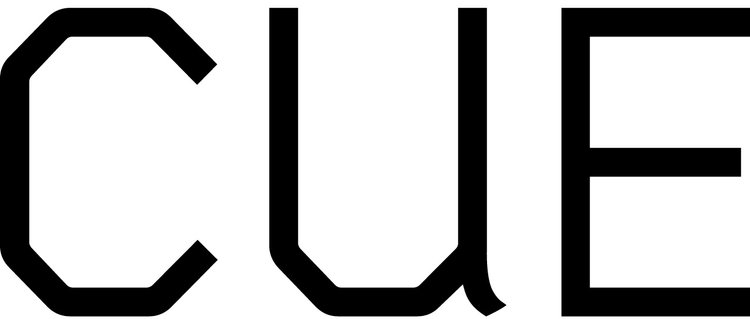Following the practice of a contemporary flâneur, the New York-based artist duo Tenet (Julia Eshaghpour and Kevin Hollidge) investigate the history, functionality, and taste of our contemporary built environment. Producing sculptures with unique yet recognizable iconographies, Tenet’s works incorporate elements of vernacular architecture, home renovations, and site-oriented narratives.
Read MoreFiltering by Author: Admin
"Translatory Gestures" by Emily Chun
It is fitting that the archive serves as a starting point for many of Adili’s works, given that her practice centers largely on the exploration and translation of materials. You can see the influence of Fluxus on her works; like Fluxus, her multidisciplinary practice privileges process over the end product and radiates playfulness, even when kneading through loaded concepts like diaspora, familial longing, and loss. Cast in a visual vocabulary of poems, letters, and the Persian alphabet, Adili’s solo exhibition at the CUE Art Foundation yokes together her investigation of the Persian language with her long-standing interest in geopolitical displacement.
Read More"Shawn Thornton: Pareidolia" by Becky Huff Hunter
This essay was written in conjunction with the exhibition Shawn Thornton: Pareidolia, curated by Tom Burckhardt, on view at CUE Art Foundation, April 13–May 24, 2017.
Witch Doctors at the Eye of the Solar Epoch (2008-2010) is a long, landscape-oriented oil painting on panel whose dimensions and compositional structure resemble a folded-out paper map. In urgent hues, it presents a god’s-eye view of a watery city or an entire cosmos, punctuated with networks of mystical and mathematical symbols. Curving sections of pale blue, white, and brown might be water and roadways. Yet Thornton also represents some subjects conventionally, head-on, as in his depiction of a simple, brown sailboat on blue water, which is constructed from the same blocks of color that make the map. The notations include tiny rainbows and Coptic crosses; infinity signs and directional arrows; skulls connected to spinal columns, whose geometric vertebrae look like railway tracks, rendered in brown and orange; and cartouches of ancient Egyptian hieroglyphic writing—which angels supposedly fed on parchment to spiritual seekers, Thornton said. Witch Doctors comprises multiple systems coming together and falling apart, held tentatively by invisible bonds. The modestly sized painting is worked with tens of layers of tiny, almost invisible brushstrokes. While seemingly flat at first glance, and in reproduction, the painting is actually constructed of tiny low reliefs—the slow, small brushstrokes and the shapes’ carefully-delineated borders draw the viewer’s attention to minute differences between sections.
Read More"New Works by Marilyn Lerner: A Sustained Spontaneity" by Anna Tome
This essay was written in conjunction with Marilyn Lerner: Harmonies, on view at CUE September 8 – October 15, 2016.
When I met the painter Marilyn Lerner in her Chelsea studio on a sweltry June morning, I was impressed to learn that the small couch in the middle of the room was not there for sitting, as I had assumed, but was actually the place that the slight, curly-haired artist slept every night as she advanced her newest body of acutely colored, geometric abstractions. Knowing this, the short distance to her actual bedroom—located several yards away behind a freestanding partition—became more metaphorical than physical. The passage from the psychological realms of the work to her living quarters and back was apparently too great to make over and over again; as she traveled deeper into the latter, it was necessary to set up a bed there, rest, and wake with the work each day in order to move farther with it. Lerner’s obsessive immersion gives us the privilege of encountering paintings that have been created slowly, and with minimal outside influence, as opposed to the influx of external references so common in much “post-internet” painting of today.
Read More"The Feminist Legacy in Radical Plastic" by Maggie Davis
This essay was written in conjunction with Radical Plastic, curated by Rachel Reese, on view at CUE June 4 – July 9, 2016.
Feminist themes materialize in the works in the exhibition Radical Plastic and bring to mind my initial exposure to feminism. In 1973, when I was an undergraduate art student, the sculptor Jane Kaufman was an artist-in-residence at my school for three weeks. Kaufman was one of the few women artists to have a solo show at the Whitney Museum of American Art in the early 1970s. She was a leader in the Pattern and Decoration movement and a founding member of the early feminist art movement. At Florida International University, Kaufman encouraged us to empower ourselves through consciousness-raising meetings. Sharing frustrations about the misogynist attitudes that we encountered as students, artists, mothers, wives, and lesbians was pivotal for my identity as a feminist artist. The artists in Radical Plastic are part of the feminist-art legacy even as they broker new strategies to explore current issues.
Read More"Unsettled" by Anna Tsouhlarakis
This essay was written in conjunction with Athena LaTocha: Curated by Jaune Quick-to-See Smith, on view at CUE November 7 - December 19, 2015.
Athena LaTocha speaks about growing up in Alaska and her relationships with the land, the people and her family. While many artists may downplay their beginnings, it became clear this was an important primer for the language LaTocha would come to use in her creative process.
Read More
